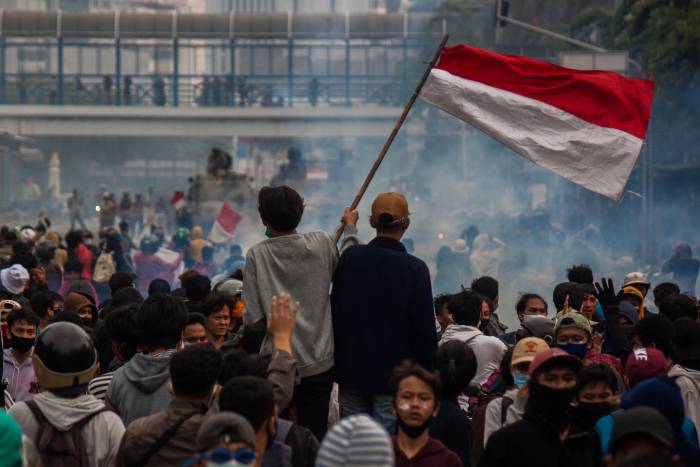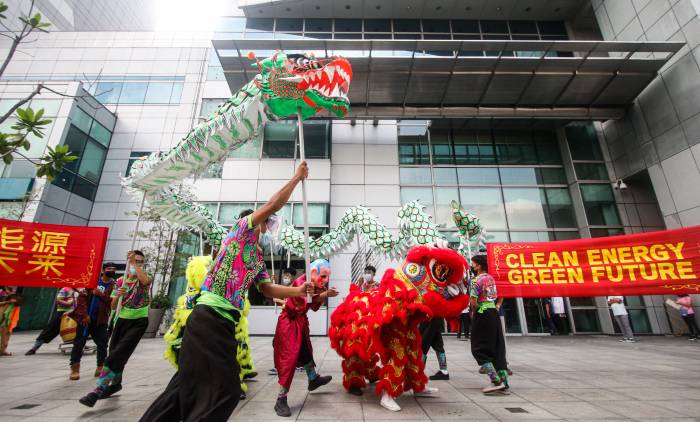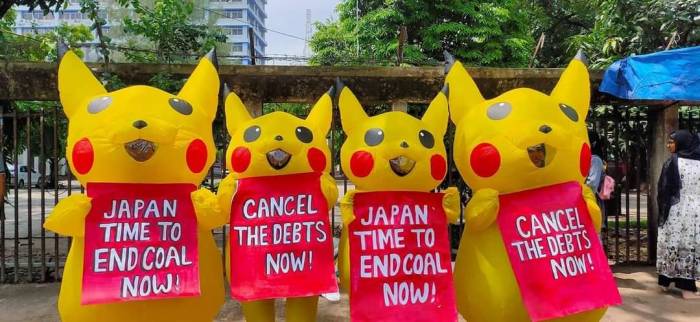The latest IPCC report released in August confirmed that climate change is occurring rapidly, intensifying, and caused by human activity on the planet. The Conference of the Parties (COP26) climate talks in Glasgow, which began last Friday on October 29th 2021, are widely seen to represent the most important climate conference since the Paris Agreement and are occurring following the collective climate indictment the IPCC report brought upon the global community.
The overarching goal of COP26 is to confirm emissions commitments from member countries that will keep global warming to within 1.5 to 2 degrees Celsius above pre-industrial levels, agreed upon during the COP21 talks in 2015 in the Paris Agreement, which was signed and ratified by 191 Parties who pledged to take domestic action including emissions reductions across a variety of sectors.
Since then, 117 countries have submitted new Nationally Determined Contributions (NDC) targets (116 countries plus the 27 European Union countries), the central outcome of the Paris Agreement and are aimed at outlining the climate change mitigation commitments of countries.
The UNFCCC NDC Synthesis report, which was requested by Parties to the Paris Agreement to assess the state of climate action ahead of COP26, concluded countries must redouble their climate commitments in order to meet Paris Agreement targets. Similarly the newly released annual Emissions Gap Report analyzed updated NDCs and determined current pledges would result in global emissions reductions of 7.5 percent compared to previous NDCs by 2030, but this relies on the pledges being implemented within an eight year window between now and 2030, a reality which will require immense political integrity among participating states along with extensive policy transformations buoyed by adequate financing. While a 55% reduction in global emissions is required to keep global warming below 1.5 degrees, current NDC pledges set us on a collective trajectory towards 2.7 degrees of warming by 2100.
Assessing NDCs in the Asia Region
According to Climate Action Tracker (CAT), since 2015, Bhutan, Japan, and Nepal have submitted stronger updated NDC targets, while South Korea has proposed a stronger NDC target. Nepal’s second NDC submission in December 2020 strengthened the country’s 2030 targets through transparency mechanisms, stronger targets, increased sector coverage and reference to a net zero ambition. The CAT assesses Nepal’s targets as “2 degrees compatible”, and the country’s new NDC submissions state it will devise a long-term low greenhouse gas (GHG) emissions strategy and aims to realize net-zero GHG emissions by 2050.
Singapore and Vietnam did not increase their ambitions. While transparency has improved and more sectors have been included in Viet Nam’s targets, the CAT still rates these as “critically insufficient”, as its stated emissions targets do not require adjustments to current policies or further climate action.
Climate Action Tracker assesses South Korea’s updated targets to remain “highly insufficient”. While its current target is to reach a 24.4% reduction below 2017 emissions levels, and South Korea did not raise its emissions targets before COP26.
Indonesia
In July 2021, Indonesia updated its NDCs, but did not strengthen its 2030 emissions target, although it has signaled intended improvements in transparency mechanisms and links to other planning documents. The country has committed to net zero emissions by 2060 through its recent electricity generator development planning (RUPTL) and its current targets are to reduce emissions by 29% by 2030.
However, coal use is increasing in Indonesia, and a variety of recent policies and the existence of extensive financing for fossil fuel use in the country present real barriers to achieving meaningful climate action and dampen prospects for stronger emissions targets.
350.org Indonesia Team Leader Sisilia Nurmala Dewi said:
“The climate emergency has affected Indonesians and will continue to impact the most vulnerable – especially those whose livelihoods depend on industries such as agriculture.
As it stands, Indonesia’s NDCs ambitions are highly insufficient. While the government should introduce policies to reduce total emissions in order to meet the Paris climate goals, emissions in Indonesia are on an upwards trajectory. This is one of the few countries in the world where coal use is also growing.
We know for a fact that Indonesia can reduce its emissions, especially in the energy sector, but this will require the government to commit to phasing out fossil fuels, especially coal. They also need to review and revoke policies that are not currently aligned with their NDC targets, such as the controversial Job Creation (Omnibus) Bill and the Mining law, which is effectively a license to pollute.”

Omnibus Law protest, October 2020. Photo credit: @anomanpasha on Instagram
China
On October 28, days before the COP26 talks were set to take place, China released its updated NDCs. The plans include little progress on previous commitments, and would see emissions reach an all time high by 2030 before aiming to achieve net-zero by 2060. While the new document outlines more details in regards to the country’s plans for a renewable energy sector, it is clear these plans are set for beyond the new decade and as the world’s largest carbon emitter, this announcement falls short of signalling momentum climate activists and scientists had hoped for leading up to COP26.
Chuck Baclagon, 350.org Regional Finance Campaigner said of the news:
“The NDCs embody the efforts and steps to be taken by countries to collectively meet the goals of the Paris Agreement, and China’s hesitation to embrace stronger near term targets is a missed opportunity to lead the charge in challenging the world’s biggest historical emitting countries to step up ambition.
Time is of utmost importance in a shrinking window to turn around the trajectory of emissions. We hope that China and the world’s largest economies will act according to the scientific realities that we are facing.”

Climate advocates from 350 Pilipinas held a dragon and lion dance at the Chinese Embassy in Makati, Metro Manila today October 27, 2021, to rally for Asian leadership ahead of the United Nations Climate Conference in Glasgow, Scotland. Photo © AC Dimatatac
Bangladesh
In 2015 Bangladesh submitted its INDCs to the UNFCCC for its Power, Industry and Transport sectors. In 2018, it then prepared its NDC Implementation Roadmap and Action Plan. Its INDC proposal included a reduction of 12 million tons (5%) in Greenhouse Gas emissions (GHGs) by 2030, and 24 million tons (10%) conditional GHG reductions with support from the international community.
Bangladesh updated its NDCs in August 2021, setting targets to reduce emissions by 22% by 2030 compared with 2012 levels, by including additional sectors such as Energy, Industrial Processes and Product Use, Agriculture, Forestry and other Land use and Waste.
Bangladesh’s NDC commitments rely on natural gas as a bridge fuel that will allow the country to transition from coal into renewables while maintaining growth and development. However, proponents of the Green New Deal in Bangladesh argue that gas is a false solution and that the country should instead pursue a direct transition to 100% renewable energy. Under this proposal, such a transition would be facilitated by Japan’s International Cooperation Agency’s withdrawal of coal financing, to help to compensate for the social and environmental burdens associated with its support for fossil fuel development in Bangladesh.
Shibayan, 350.org’s South Asia Team Leader said:
“Bangladesh is one of the most vulnerable countries to climate change and it has every right to provide cheap electricity to its citizens, but transitioning from one fossil fuel to another is not the solution to Bangladesh’s energy needs. Natural Gas is not clean and neither cheap. Reliance on expensive imported coal and LNG will put a burden on the people and the government’s exchequer. The new Integrated Energy and Power Master Plan Project, currently under development by Japan International Cooperation Agency (JICA), is an opportunity for Bangladesh to work on a roadmap for a 100% transition to Renewable energy by 2050.”

Young people in Pikachu costumes protest Japan’s funding of coal projects in Bangladesh.
Photo: Youthnet
Japan
During the Leader’s Climate Summit in April 2021 which Japan hosted, the country announced 2030 domestic emissions reduction targets of 46% by 2030 below 2013 levels, outlining additional measures that could lead to a 50% reduction and net-zero by 2050. This was a welcome increase from its previous 26% reduction target, although it does not meet 1.5-degree compatibility.
Japan’s NDC hasn’t been submitted officially yet, but it is expected to be consistent with the Basic Energy Plan that was recently published by the government.
Takayoshi Yokoyama, 350.org Japan Team Leader said:
“If this 46% were calculated against 1990 like European countries are doing, it would be valued at 40.3%. This means the targets are even less ambitious and aren’t enough to meet the 1.5-degree goal set out in the Paris Agreement.
While the UN Secretary-General, Antonio Guterres urged OECD countries to abolish all coal burned power stations, Japan’s plan will keep them within the composition ratio of 19% in terms of electricity generation. Japan is failing to take the responsibility of an economically advanced country for emitting huge amounts of greenhouse gases historically.
It is doubtful that Japan will even be able to meet this insufficient goal because there are no specific measurements to achieve it, and the government is heavily dependent on currently non-feasible technologies like carbon capture, utilization and storage (CCUS), coal combustion with ammonia, and nuclear power generation.
I hope Prime Minister Kishida will announce a stronger commitment to drastic and rapid reduction of GHG emissions by 2030 to meet the 1.5-degree goal.”

People power in support of the finance campaign in Japan on June 29th, 2021. Image: 350 Japan
The role of finance in achieving emissions targets
While domestic energy, transport and industry policies are undoubtedly crucial elements of reducing emissions, the role of finance cannot be ignored. A UN report released in January revealed that developing countries spend approximately $70 billion a year adapting to climate change and that by 2030 the figure could reach $300 billion. As part of the 2016 Paris Agreement, the ‘grand bargain’ involved all countries agreeing to cut greenhouse gas emissions, while rich countries pledged to spend billions of dollars in climate finance to poorer countries, but the Covid-19 pandemic has set that promise back.
While 49 countries have committed to net-zero emissions targets, these fall short of ensuring adequate short-term action, often rely on the future development of untested and questionably effective technological ‘fixes’, and ultimately, offer a false sense of security: net-zero emissions does not mean zero emissions, but rather, that a country’s emissions will be offset by carbon-capture and other technologies – a method of action which the scientific community agrees is insufficient.
In order to achieve the meaningful climate action required by this moment, the crisis must be tackled from multiple fronts – including cutting off financing of fossil fuels from public and private financial institutions, domestic policy commitments to phase out fossil fuels and invest in renewable energy solutions, and financing for loss and damage and investment into renewable infrastructure from industrialized countries into those who are most in need in terms of adaptation and mitigation.